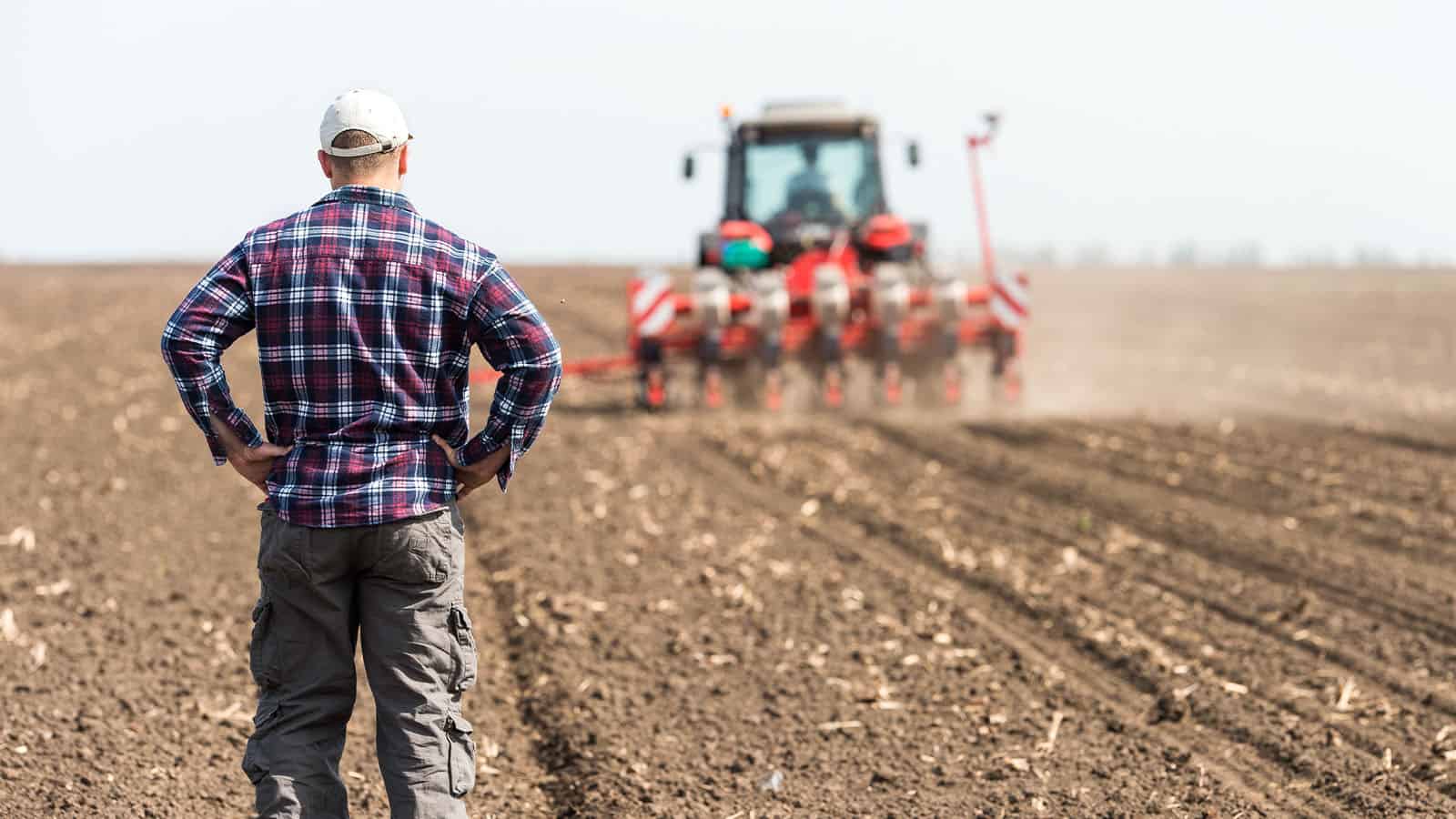Jobs
Strict 2025 Application Cap for Agri-Food Immigration Pilot – Canada Immigration and Visa Information. Canadian Immigration Services and Free Online Evaluation.

Canada has announced a cap of 1,010 permanent residence applications under the Agri-Food Immigration Pilot for 2025, reflecting the program’s high demand.
Since its launch in 2020, the Agri-Food Immigration Pilot has played a crucial role in addressing labour shortages in Canada’s agri-food sector. The pilot has enabled over 4,500 agri-food workers and their families to become permanent residents, supporting one of the country’s essential industries.
However, the program will officially close on May 14, 2025, as it reaches its five-year maximum duration under federal regulations.
On This Page You Will Find:
- Key details about the 2025 application cap for the Agri-Food Immigration Pilot.
- A summary of eligible industries and occupations under the pilot.
- Comprehensive eligibility requirements for candidates.
- Alternative immigration pathways for agri-food workers after the program ends.
- Advice for applicants submitting under the 2025 cap.
Canada plans to welcome 10,920 new immigrants through pilot programs in 2025 under its Immigration Levels Plan. These include the Rural Community Immigration Pilot, the Francophone Community Immigration Pilot, Caregiver pilots, the Agri-Food Immigration Pilot and the Economic Mobility Pathways pilot.
Key Details of the 2025 Agri-Food Pilot Cap
- Application Limit: IRCC will accept only 1,010 applications for permanent residence under this pilot in 2025.
- Deadline: Applications will be accepted until May 14, 2025, or until the cap is reached—whichever comes first.
- Program Closure: The pilot will end permanently on May 14, 2025, as it cannot be extended beyond its five-year mandate.
Why the Cap Was Introduced
High demand for the Agri-Food Pilot has exceeded the spaces allocated under Canada’s 2025–2027 Immigration Levels Plan. This cap ensures that IRCC can process applications efficiently while meeting its immigration targets. Applications submitted before the deadline will be processed in line with the established quotas, even after the pilot concludes.
Alternatives for Agri-Food Workers After May 2025
Although the Agri-Food Pilot is ending, agri-food workers can explore other immigration pathways, including:
- Express Entry Programs:
Federal programs for high-skilled workers. - Provincial Nominee Programs (PNPs):
Region-specific programs tailored to labour needs. - Atlantic Immigration Program:
Focused on recruiting workers for jobs in Atlantic Canada. - Rural and Francophone Community Pilots:
New programs encouraging settlement in rural and Francophone areas.
These alternatives offer continued opportunities for agri-food workers to achieve permanent residency while supporting Canada’s economic growth.
Advice for Applicants
If you qualify for the Agri-Food Pilot, submit your application as soon as possible to secure one of the 1,010 available spots. Ensure your application is complete and aligns with the pilot’s eligibility requirements. For those unable to apply under the pilot, explore alternative pathways to secure your future in Canada.
Agri-Food Immigration Pilot Requirements
The Agri-Food Immigration Pilot targets skilled workers in Canada’s meat processing, mushroom and greenhouse crop production, and livestock industries. This program offers a pathway to permanent residency for candidates who meet specific work experience, job offer, and industry criteria.
Eligible Industries
The pilot focuses on three main industries classified under the North American Industry Classification System (NAICS):
- Meat Product Manufacturing (NAICS 3116)
Includes roles such as industrial butchers, meat cutters, and poultry preparers. - Greenhouse, Nursery, and Floriculture Production (NAICS 1114)
Includes mushroom production and jobs like agricultural supervisors and harvesting labourers. - Animal Production, Excluding Aquaculture (NAICS 1121, 1122, 1123, 1124, or 1129)
Focuses on livestock raising with positions like specialized livestock workers and farm machinery operators.
Eligible Occupations
Here are the National Occupational Classification (NOC) codes for jobs eligible under the pilot:
- Meat Product Manufacturing
- NOC 63201 – Butchers (retail and wholesale)
- NOC 65202 – Meat cutters and fishmongers
- NOC 94141 – Industrial butchers and meat cutters
- NOC 82030 – Agricultural service contractors and farm supervisors
- NOC 84120 – Specialized livestock workers
- NOC 85100 – Livestock labourers
- NOC 95106 – Labourers in food and beverage processing
- Greenhouse, Nursery, and Floriculture Production
- NOC 82030 – Agricultural service contractors and farm supervisors
- NOC 84120 – Specialized livestock workers
- NOC 85100 – Livestock labourers
- NOC 85101 – Harvesting labourers
- Animal Production
- NOC 82030 – Agricultural service contractors and farm supervisors
- NOC 84120 – Specialized livestock workers
- NOC 85100 – Livestock labourers
- NOC 85101 – Harvesting labourers
Candidate Requirements
To qualify for the Agri-Food Immigration Pilot, applicants must meet the following criteria:
- Work Experience:
- At least 12 months (1,560 hours) of full-time, non-seasonal Canadian work experience in an eligible occupation under the Temporary Foreign Worker Program within the last three years.
- Language Proficiency:
- A minimum Canadian Language Benchmark (CLB) level 4 in English or French for reading, writing, speaking, and listening.
- Education:
- High school diploma or higher, or equivalent Canadian education.
- Job Offer:
- An indeterminate, full-time, non-seasonal job offer from a Canadian employer (outside Quebec) at or above the prevailing wage.
- Settlement Funds:
- Proof of sufficient settlement funds for the applicant and their dependents, unless already working in Canada.
FAQ: Agri-Food Immigration Pilot and 2025 Cap
What is the 2025 application cap for the Agri-Food Immigration Pilot?
Canada has capped the 2025 intake for the Agri-Food Immigration Pilot at 1,010 permanent residence applications. Applications are accepted until May 14, 2025, or until the cap is reached. This limit reflects high demand for the program and aligns with Canada’s Immigration Levels Plan, ensuring efficient processing within established quotas.
What happens to the Agri-Food Immigration Pilot after May 2025?
The pilot will officially close on May 14, 2025, as it reaches its maximum five-year duration. Applications submitted before the deadline and within the cap will still be processed. After the pilot ends, agri-food workers can explore other immigration pathways, such as Express Entry, Provincial Nominee Programs (PNPs), or the Atlantic Immigration Program.
Who is eligible for the Agri-Food Immigration Pilot?
Eligible candidates must have 12 months of Canadian work experience in a qualifying agri-food industry, meet language and education requirements, and hold a full-time job offer from a Canadian employer. They must also demonstrate sufficient settlement funds unless already working in Canada.
What industries and jobs qualify for the pilot?
The pilot targets three industries: meat product manufacturing, greenhouse and mushroom crop production, and livestock raising. Jobs include butchers, agricultural supervisors, livestock labourers, and harvesting labourers. Specific eligibility depends on NOC codes assigned to these roles.
What alternatives exist for agri-food workers after the pilot ends?
After May 2025, agri-food workers can apply for other programs, including Express Entry, Provincial Nominee Programs (PNPs), the Atlantic Immigration Program, or Rural and Francophone Community Pilots. These programs offer pathways to permanent residency for skilled and semi-skilled workers in high-demand sectors.









